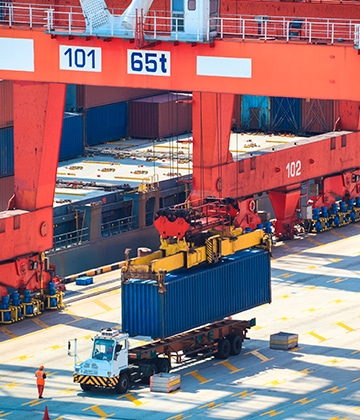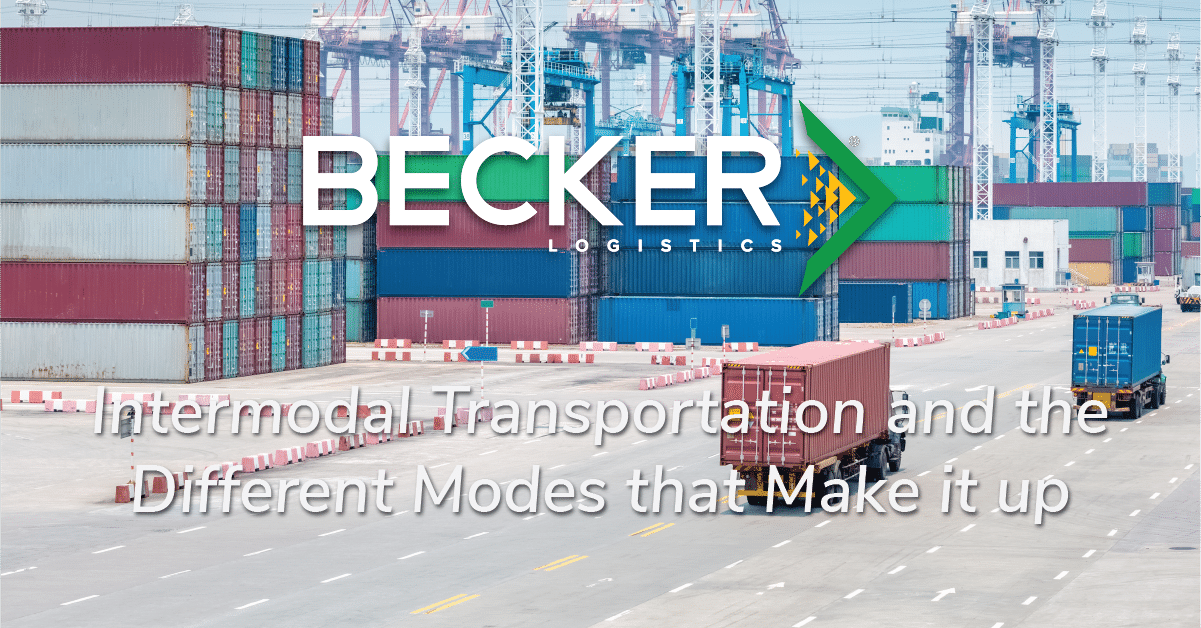Intermodal transportation is simply when freight is shipped by more than one mode. This means the freight is transferred across trucks, rail, sea, or air. The complexity of intermodal can vary wildly and can involve several shipping providers. It is important to offer quality shipping service in order to make sure that the supply chain is uninterrupted.
If you are a shipper looking to partner with a 3PL for your intermodal transportation then you want to look for experience and communication. Take your time to look through 3PLs until you find someone that you can partner with.
A breakdown of different intermodal transportation modes
Truck
A truck will have to be involved at some point in the supply chain. For intermodal transportation, trucks are usually involved in the first and last stages of the shipment. Drayage containers are usually used since they’re easier to transport across several modes. There are times where an “over-the-road” trailer is shipped via another mode but it is not as common. There are some additional rules that will fall into place when compared to dry-van which you can read more about here.
Rail
Rail is the most common mode after trucks, there was $15.7 billion worth of freight shipped over rail in 2018 alone. The real advantage of rail is the dollar per mile you are able to get when compared to shipping via truck. So then, why isn’t rail used all the time? Well, other than every warehouse NOT being connected via rail, it adds some extra time and complexity, so it’s typically not worth using rail unless you are shipping over a pretty long distance.
Sea
Shipping over sea comes in third with $8 billion of product shipped. In intermodal transportation, over sea shipping is primarily used for importing and exporting and can yield low cost per mile rates. Cargo ships are able to hold an extraordinary amount of freight which means you are a small piece of a whole. The downside of shipping over sea is the time it takes to ship. In most cases, though, if you are shipping over the sea you don’t have many other options.
Air
Shipping via air comes in fourth with $4billion worth of product being shipped. The number one benefit of shipping via air is speed. When you need to get freight from one continent to another in a day or two you will have no other options but air. Additionally, using air can make some routes less complex since it will usually be a straight shot without the freight having to go across several modes. The biggest downside of shipping over air is the cost. Additionally, it is the mode most susceptible to weather, a bad storm can lead to your freight being stuck for hours.
The Importance of Quality Shipping in Intermodal
Now that you know the steps involved in intermodal you can probably see how it can get complicated fast. Using a quality shipping service is a must in intermodal transportation. This means providing constant updates, having a team that knows shipping and more specifically shipping in your industry/location. Also, it requires planning. Intermodal shipping typically takes some more time once a ship, or train, arrives at its destination all of the freight is going to have to unload before you can get to it. That means that if you start the process early you should be set and ready to ship with success.

Becker Logistics offers a quality intermodal shipping service. We have a team that knows the logistics industry inside and out. Feel free to reach out to us or request a quote to see if we work into your shipping strategy.
